Frenchglen and the P Ranch
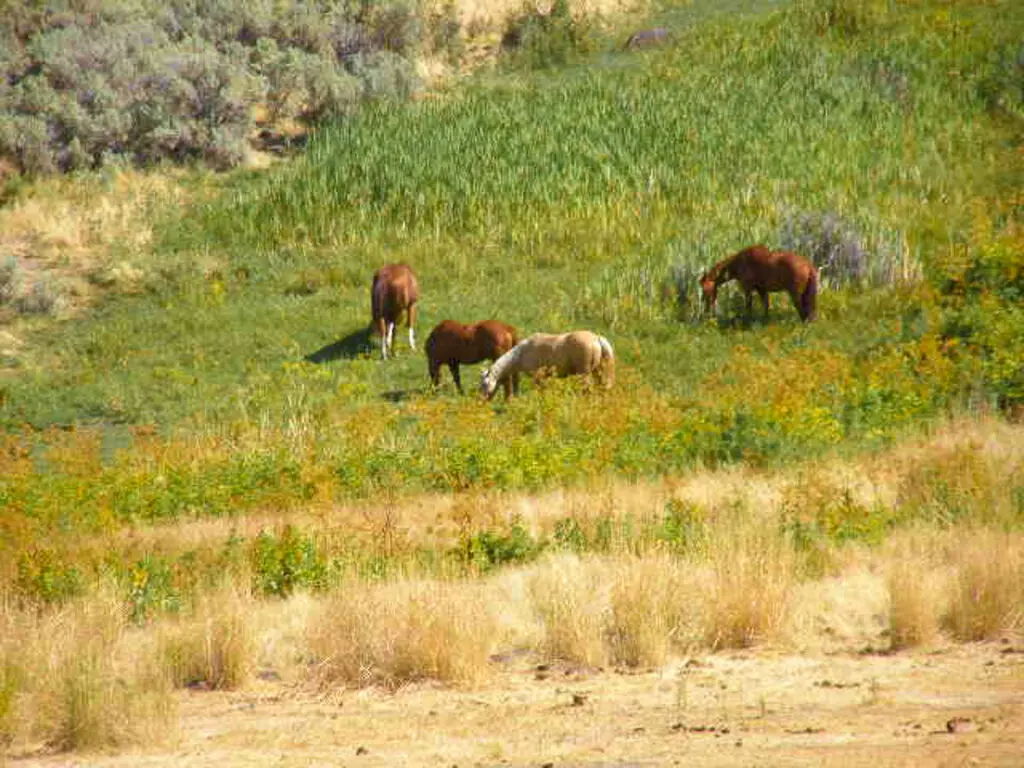
Southeastern Oregon, especially Harney County, contains an area of vast, spectacular high desert. Here the Frenchglen Hotel dominates, the quintessential queen of the high desert. The present hotel has been welcoming guests for one-hundred years, since 1923, although a smaller, more rudimentary rooming house was built in 1916. On a sunny September morning, I set out to visit this queen and her surrounding area. fghotel@yahoo.com
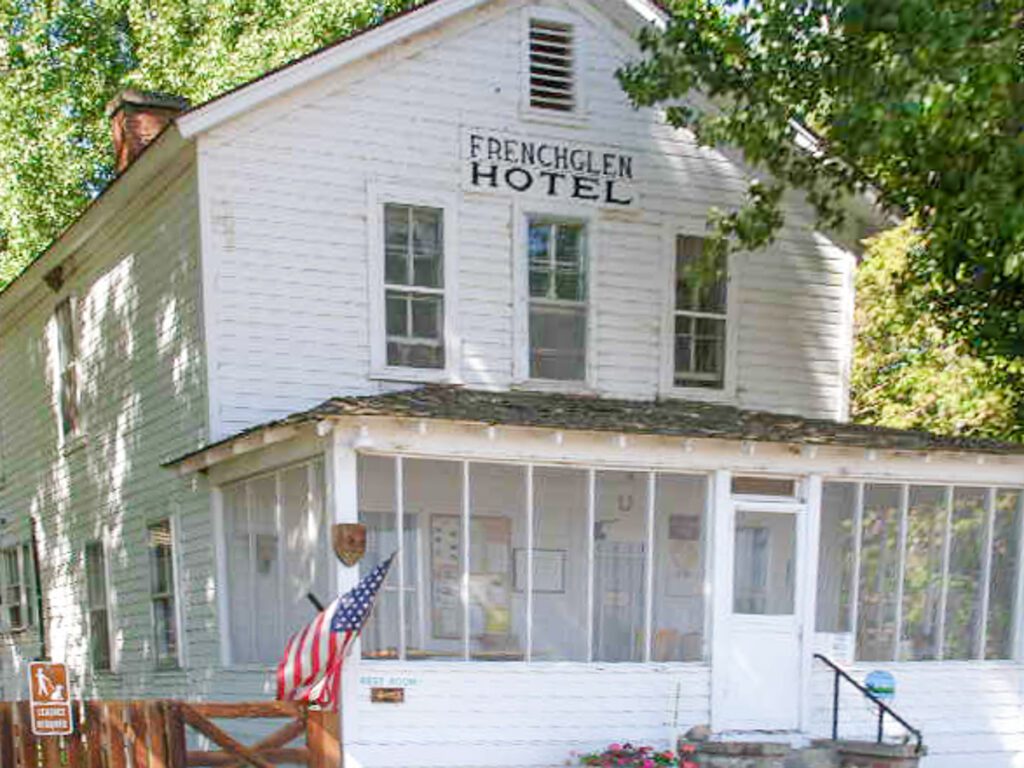
Located in the small town of Frenchglen, OR (pop 11), the hotel looks at the edge of the Steens Mountains and the Malheur National Wildlife Refuge, in remote Harney County. The hotel is the jumping off spot for hunters, hikers, or sightseers. The magnificent Steens Mountain Loop Road literally begins across the highway.
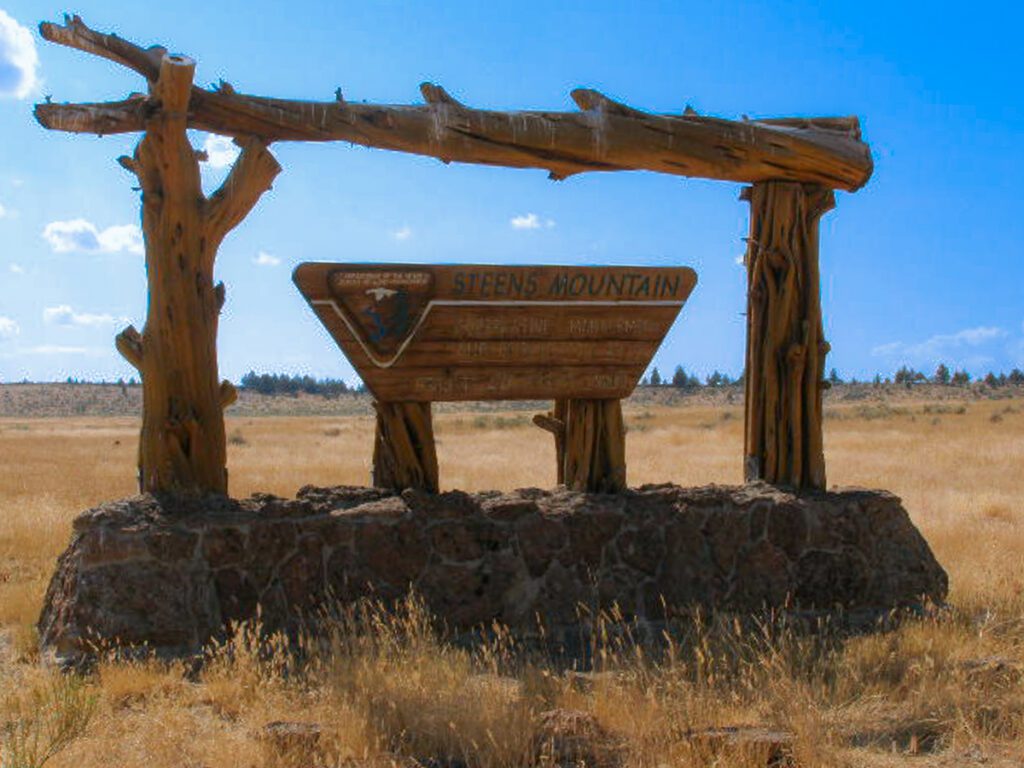
Background Story
Frenchglen acquired its name by a combination of Peter French and Dr. Hugh Glenn, early Oregon cattle barons. John William French, nicknamed Peter, was born in Missouri in 1849. As a teenager, he migrated to California and landed a job breaking horses on the ranch of Dr. Hugh Glenn. A short man, French was hard working, a quick learner and ruthlessly ambitious. Agreeable and well-liked by his hired help, French was curt, abrasive and intensely disliked by foes and competitors. http://en.wikipedia.org/wiki/Peter_French
Equally determined, Hugh Glenn was a physician by trade but a land baron and farmer by profession. Courageously, he served with the Missouri Volunteers during the Mexican American War, later making money through businesses related to Gold Rush seekers in California. With those trade profits, he secured 45,000 acres in present day Colusa County of northern California and became the state’s Wheat King. Glenn set his sights on a bigger goal – cattle – and, with the help of his now son-in-law, French, bought land in southeastern Oregon. The new rail stops in Winnemucca, NV, serving markets in Denver, Chicago and beyond, meant a short cattle drive and a profitable venture.
Peter French was only 23 when he drove 1,200 head of cattle into the Donner and Blitzen Valley (German for “thunder and lightning”). This high desert valley provided plenty of space and grass for his cattle. Through the financial backing of his partner and father-in-law, Dr. Glenn, the French-Glenn Livestock Company took root. The 1,200 cattle grew to 45,000 on nearly 200,000 acres as more and more land in pristine valleys with exclusive water rights was obtained. This extensive parcel became known as the “P” Ranch.
Always inventive, French built three unique round barns, in the early 1880’s, on the “P” Ranch. These barns operated to break horses in the winter months. It is estimated up to 1000 horses were tamed in these barns each year. The barns were 100 feet in diameter, with a round stone center station for foaling. A 20’ wide corridor surrounds the foaling station, and it is here the horses were worked.
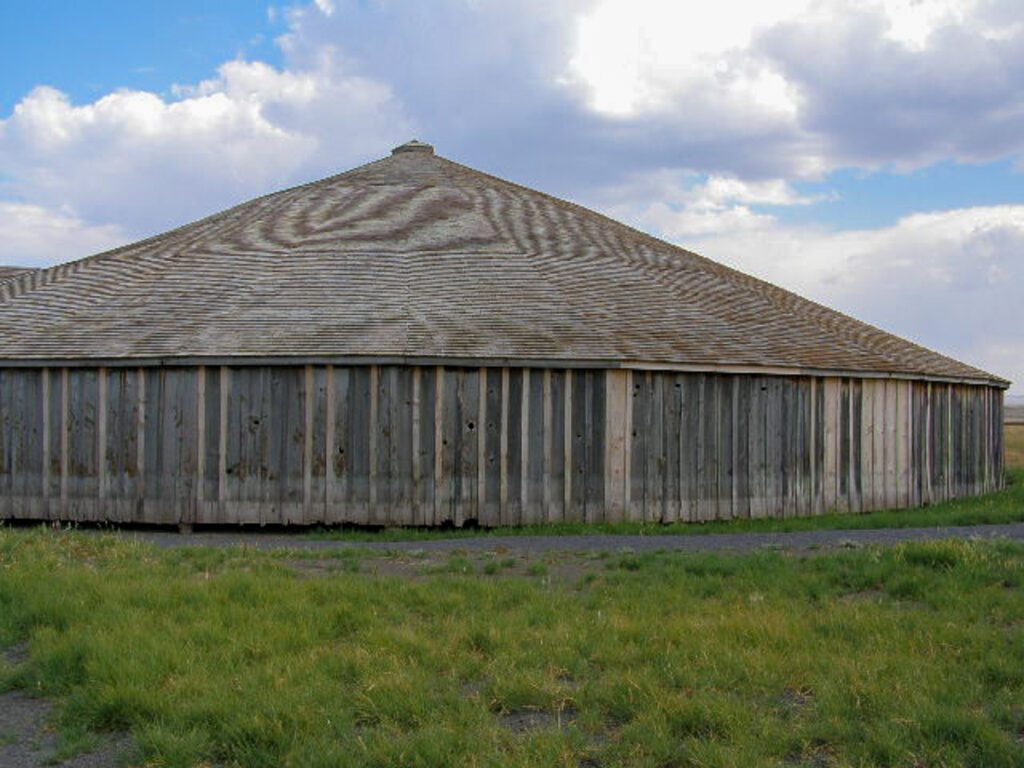
The Round Barns had an inverted umbrella style center support, from juniper trees 150 miles away in the Blue Mountains. The one remaining Round Barn is near the tiny hamlet of Diamond, OR, and is listed on the National Register of Historic Places. Isolated for miles around, but blending in with the surrounding hills, this one-and-only place is open to visitors daily, if the weather allows road passage.
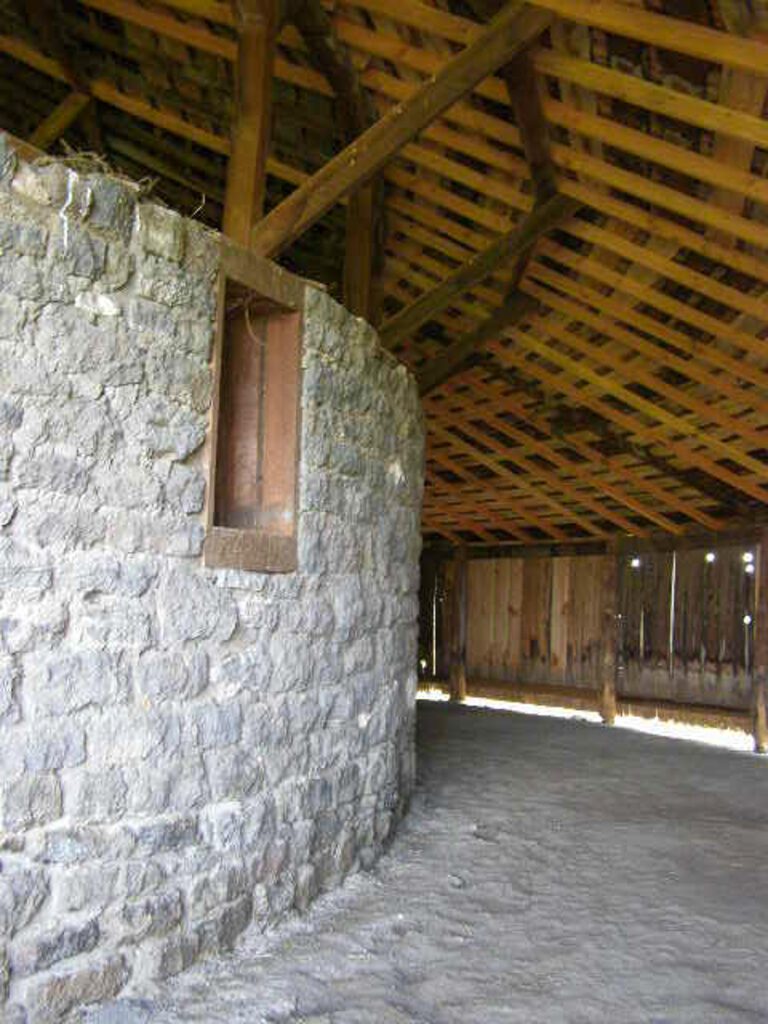
From the beginning, the partners were plagued with problems by squatters and hostile Indians.
In 1883, on his California ranch, Glenn had words that escalated into a fist fight with his alcoholic bookkeeper, Hurum Miller. Less than a week later, the still fuming Miller, hid in ambush and shot Glenn in the head, killing him instantly.
In 1891, a newly formed northern California county was named Glenn County in his honor.
French met his end in a similar way. Over the years, French had acquired land completely encircling the ranch of neighbor Ed Oliver. For ten years legal battles had ensued between the two men. Oliver wanted the county court to grant a road easement through French’s land allowing Oliver access public access to his land. French continually blocked these actions.
On December 26, 1897, Oliver approached French’s ranch on horseback. French rode out to meet him. Reportedly, Oliver charged French, who struck Oliver’s horse with a whip. French then turned to return to his work. Oliver shot him in the back but was later acquitted, claiming self-defense.
Peter French was only 48 years old. In just twenty-five years, he had built the nation’s largest cattle ranch.
Hotel History
The Frenchglen Hotel holds a rich history. It was originally built as an overnight stop for stagecoach and freight travelers by the meat packers, Swift and CO, who owned the “P” Ranch in the early part of the 1900s. At that time, the hotel had five bedrooms.
In the early 1930’s with stagecoach travels extinct, the hotel housed local teachers. The school district funded the hotel $30.00 a month for each teacher, which included three meals daily. The hotel manager was required to deliver lunch to the teachers.
During the Great Depression, the “P” Ranch was sold to the Department of Fish and Wildlife, renamed the Malheur Wildlife Refuge. The Frenchglen Hotel was included in this sale. Roosevelt’s Civilian Conservation Corps (CCC) arrived with orders to remodel and improve the site. Indoor plumbing, bathrooms and three more bedrooms completed the hotel. Most importantly, electricity, via a gasoline powered power plant, was welcomed. In 1959, electricity came to Harney County and the gasoline powered plant was removed.
The Oregon State Parks bought the hotel in 1972 and made the hotel a State Heritage Site. The State Parks did a bit more remodeling, bringing it to its present state of 8 bedrooms, and two shared bathrooms (one men’s and one women’s). In the last few years, five offsite, ensuite rooms have been built.
The Frenchglen hotel’s authenticity cannot be matched. The rooms, spare but comfortable, are without television or telephone. Colorful handmade quilts cover the beds and decorate the walls. The bed springs squeak and the stairs creak, adding to the charm. I felt encased in history.
Another charm is that no key was given to my room, although one is furnished on request. No matter, I felt safe.
Being of American Foursquare architecture, the Frenchglen Hotel is a two storied rectangle. The queen utilizes every inch of space. A long-screened front porch overflows with log furniture. Enjoy a drink and conversation here, watching stars hanging huge and low as this area qualifies as one of the darkest skies in the United States. A group from the Nature Conservancy was also at the hotel; one of them commented, “This porch is the best place in the world to relax”.
The pet friendly Frenchglen Hotel serves three meals a day, plus a boxed lunch for day trippers. Menus are displayed for breakfast and lunch. Check the menu board for the daily special. Always French toast for breakfast, a choice I highly recommend. The lunch special varies but is typically a soup, sandwich, and dessert combination.
Dinner is another matter. Reservations are required for the evening meal; the dining room only seats 24. Served family style with whatever the cook declares. Of the two nights I dined there, the first delivered huge platters of prime rib, from well done to nearly raw. Accompanying the prime rib were generous casseroles of cheesy au gratin potatoes, large bowls of fresh salad, a steamed vegetable, rolls and dessert (marionberry cobbler and ice cream).
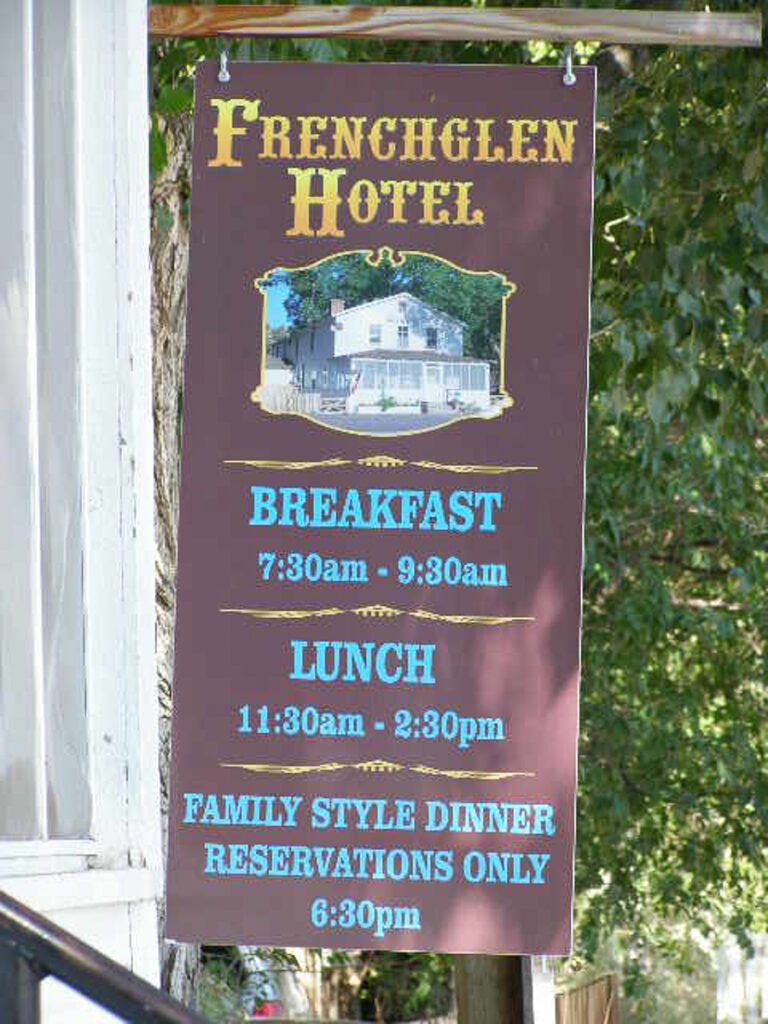
The second evening showcased baked chicken halves, mashed potatoes, vegetables, salad, rolls and dessert (this time homemade apple cake and ice cream). There is more than enough for everyone.
The Frenchglen Hotel holds a wine and beer license. No hard liquor can be consumed in the hotel.
Steens Mountain Loop
The Steens Mountains are the highest fault block mountains in the U.S. The Steens Mountain Loop, the biggest draw to the Frenchglen area, is truly a geological wonder. The Loop Road, which begins in Frenchglen, starts with nearly 60 miles of intense scenery and informative waysides. Educate yourself at each one. From information on junipers, fire control, glacial history, native flora, fauna, animals and birds, these wayside mini lessons contain fun facts of geology, geography, and history.
Four spectacular U-shaped canyons, the work of glaciers during the Ice Age, can be viewed from the Steens Mountain Loop Road – Kiger, Little Blitzen, Big Indian and Wildhorse. I found each gorge, nearly one-half mile deep, silent, and eerily spiritual.
At the first gorge, I was hot and shedding layers. At the last one, the gorgeous hanging valley, Wildhorse, visitors were dressed for the Arctic. As badly as everyone wanted to hike down to Wildhorse Lake and back, it was just too windy and cold. Thick, dark clouds were hanging on the horizon.
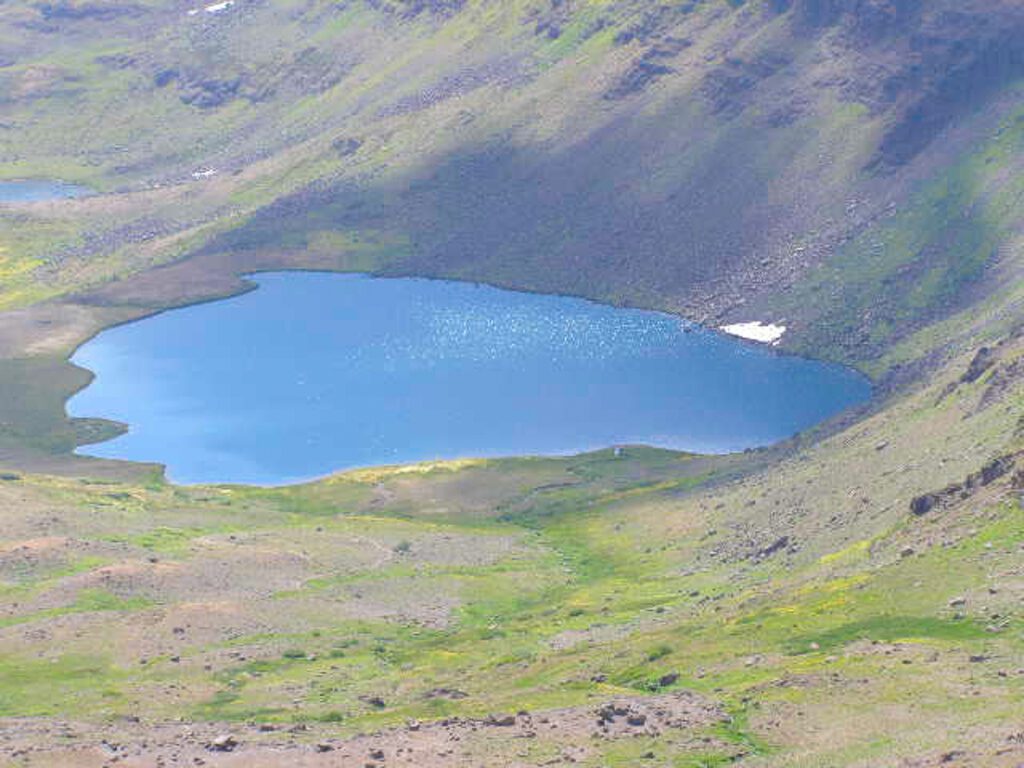
By the time I drove down the curve laden hillside, to the isolated Riddle Brothers homestead (three bachelor brothers who ranched in the Steens for many years), I was stripped to shorts and tee again. www.gorp.com/parks-guide/travel-ta-scenic-drives-malheur-national-wildlife-refuge
The Loop Road is only a small part of the more than 496,000 acres of the Steens Mountains Cooperative Management and Protection Area. It is a combination of public and private lands that offers scenic and recreational opportunities like nowhere else. Four or five herds of wild horses roam this area, the most exotic being the Kiger Mustangs, believed to be descendants of Spanish Mustangs brought in by the Conquistadors in the 1600’s. They have a characteristic dun color. There are Kiger Mustang viewing areas, but they chose not to accommodate me.
The Loop Road is gravel but can be rutty. It is not recommended for low clearance vehicles or RV’s. The Steens Mountains make their own weather, so be prepared for sudden storms any time of year. These storms could produce thunder and lightning, rain, snow, or any combination. www.traveloregon.com/Explore-Oregon/Eastern-Oregon/Trips-We-Love/Steens-Loop
Campgrounds
Campgrounds lie along the Loop Road, including the South Steens Campground, which is the trailhead for both Little Blitzen and Big Indian Gorges. It is also a few miles away from the Riddle Brothers homestead. The South Steens Campground is open May – October and has 36 campgrounds, nearly half of them horse camping sites (with horse ties) and one group tenting site.
Two other campgrounds, each only three miles from Frenchglen, are Page Springs and the Steens Mountain Resort.
Page Springs has 36 camp spots for RV’s and tents. Sitting on the Donner and Blitzen River, it has pit toilets, but no showers. The cost is $8.00 per vehicle per night and is open all year.
The Steens Mountain Resort, also open all year, is under new management. This resort has 37 full RV sites and 39 water and electric sites. The prices vary depending on the need. There is an end row for tents (maybe 10 sites) that cost $15.00 per night. Additionally, there are 8 cabins with full kitchens and porches. Prices vary for these, as well.
The Steens Mountain Resort has showers, toilets, laundry and a general store with maps and information.
The Frenchglen Hotel is in the town of Frenchglen, OR 60 miles south of Burns, OR, on paved Highway 205 and operates from March 15th to November 1st. The busiest time is Labor Day to the end of October.
To visit Peter French’s Round Barn, travel south of Burns on Highway 205, turning left on Highway 78 toward Diamond.
For reservations, call 541-493-2825, or e-mail fghotel@yahoo.com.
Both the Page Springs and South Steens Campgrounds are operated by the BLM. Information on either can be found at 541-416-6700 or www.blm.gov/or.
Steens Mountain Resort can be reached at 800-542-3765 or www.steensmountainresort.com.